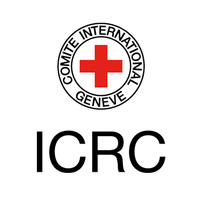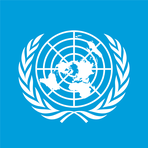The Humanitarian Quagmire in Gaza: Aid Amidst Chaos
June 9, 2025, 5:04 am

Location: Switzerland, Geneva
Employees: 10001+
Founded date: 1863

Location: United States, New York
Employees: 10001+
Founded date: 2002
Total raised: $500M
The Gaza Strip is a stage for a tragic play, where the actors are caught in a web of conflict, politics, and humanitarian crises. The Gaza Humanitarian Foundation (GHF), a US- and Israeli-backed group, has become a focal point in this drama. Its mission is to deliver aid, but the reality is far more complex.
As the curtain rises, the GHF announces the closure of its aid distribution sites. Originally set to reopen, the facilities remain shuttered. The Israeli army has declared the roads leading to these sites as combat zones. This decision follows a series of deadly incidents that have drawn international condemnation. The United Nations has voiced its concerns, calling the situation dire.
The GHF claims it is committed to ensuring the safety of civilians. Yet, the chaos surrounding aid distribution tells a different story. On a recent day, dozens of Palestinians lost their lives while trying to collect food. The scenes were chaotic, with no oversight as desperate crowds jostled for supplies. The GHF’s response? A call for clearer guidance from the Israeli military. But can guidance alone protect lives in a war zone?
The backdrop to this tragedy is a long-standing conflict. The war in Gaza has escalated since October 2023, when Hamas launched a surprise attack on Israel. The aftermath has been catastrophic. Over 54,000 Palestinians have died, many of them civilians. The toll on both sides is staggering, with Israel also suffering significant losses. Yet, the humanitarian crisis continues to deepen.
Aid has become a political pawn. The GHF, despite its intentions, is viewed with skepticism. Major aid organizations have refused to collaborate, citing concerns over its ties to the Israeli military. The GHF operates under a model that some critics argue militarizes humanitarian efforts. The use of private US security raises red flags. Is aid truly neutral when it is delivered under the watchful eye of armed guards?
The UN Security Council is set to vote on a resolution demanding a ceasefire and unrestricted humanitarian access. Yet, the United States has wielded its veto power to block similar efforts in the past. The political landscape is fraught with tension. The US stands firmly with Israel, complicating any push for a resolution that might ease the suffering in Gaza.
As the GHF navigates this treacherous terrain, it faces immense pressure. The organization claims to have distributed millions of meals, but the reality on the ground tells a different story. Food shortages loom large, and the population of Gaza, around 2.1 million, is at risk of famine. The aid distribution model is criticized as a "recipe for disaster."
The situation is further complicated by accusations of violence. The Israeli military insists it does not prevent Gazans from collecting aid. However, reports of gunfire near aid sites paint a different picture. The International Committee of the Red Cross has condemned the violence, calling it a grave breach of international law. The cycle of blame continues, with both sides entrenched in their narratives.
In the midst of this chaos, activists are attempting to break the blockade. A boat from the Freedom Flotilla Coalition is en route to Gaza, carrying supplies and solidarity. Yet, Israel has warned it will protect its maritime borders. The tension is palpable. Will this act of defiance lead to confrontation?
The humanitarian crisis in Gaza is not just a statistic; it is a human tragedy. Each number represents a life lost, a family shattered. The world watches as the situation unfolds, but the response has been tepid at best. The UN’s calls for action have often fallen on deaf ears. The time for decisive action is long overdue.
As the GHF struggles to navigate the complexities of aid distribution, the question remains: can humanitarian efforts truly succeed in a war zone? The answer is murky. The intersection of politics and aid creates a minefield. Each step forward is fraught with danger.
The international community must grapple with its role in this crisis. The blockade, the military actions, and the political maneuvering all contribute to the suffering of innocent civilians. The humanitarian model must evolve. It must prioritize the safety and dignity of those it aims to help.
In conclusion, the situation in Gaza is a stark reminder of the fragility of human life in conflict zones. The GHF’s efforts, while well-intentioned, are overshadowed by the chaos of war. Aid should be a lifeline, not a weapon. As the world watches, the need for a sustainable solution becomes ever more urgent. The humanitarian quagmire in Gaza demands attention, compassion, and action. The time to act is now.
As the curtain rises, the GHF announces the closure of its aid distribution sites. Originally set to reopen, the facilities remain shuttered. The Israeli army has declared the roads leading to these sites as combat zones. This decision follows a series of deadly incidents that have drawn international condemnation. The United Nations has voiced its concerns, calling the situation dire.
The GHF claims it is committed to ensuring the safety of civilians. Yet, the chaos surrounding aid distribution tells a different story. On a recent day, dozens of Palestinians lost their lives while trying to collect food. The scenes were chaotic, with no oversight as desperate crowds jostled for supplies. The GHF’s response? A call for clearer guidance from the Israeli military. But can guidance alone protect lives in a war zone?
The backdrop to this tragedy is a long-standing conflict. The war in Gaza has escalated since October 2023, when Hamas launched a surprise attack on Israel. The aftermath has been catastrophic. Over 54,000 Palestinians have died, many of them civilians. The toll on both sides is staggering, with Israel also suffering significant losses. Yet, the humanitarian crisis continues to deepen.
Aid has become a political pawn. The GHF, despite its intentions, is viewed with skepticism. Major aid organizations have refused to collaborate, citing concerns over its ties to the Israeli military. The GHF operates under a model that some critics argue militarizes humanitarian efforts. The use of private US security raises red flags. Is aid truly neutral when it is delivered under the watchful eye of armed guards?
The UN Security Council is set to vote on a resolution demanding a ceasefire and unrestricted humanitarian access. Yet, the United States has wielded its veto power to block similar efforts in the past. The political landscape is fraught with tension. The US stands firmly with Israel, complicating any push for a resolution that might ease the suffering in Gaza.
As the GHF navigates this treacherous terrain, it faces immense pressure. The organization claims to have distributed millions of meals, but the reality on the ground tells a different story. Food shortages loom large, and the population of Gaza, around 2.1 million, is at risk of famine. The aid distribution model is criticized as a "recipe for disaster."
The situation is further complicated by accusations of violence. The Israeli military insists it does not prevent Gazans from collecting aid. However, reports of gunfire near aid sites paint a different picture. The International Committee of the Red Cross has condemned the violence, calling it a grave breach of international law. The cycle of blame continues, with both sides entrenched in their narratives.
In the midst of this chaos, activists are attempting to break the blockade. A boat from the Freedom Flotilla Coalition is en route to Gaza, carrying supplies and solidarity. Yet, Israel has warned it will protect its maritime borders. The tension is palpable. Will this act of defiance lead to confrontation?
The humanitarian crisis in Gaza is not just a statistic; it is a human tragedy. Each number represents a life lost, a family shattered. The world watches as the situation unfolds, but the response has been tepid at best. The UN’s calls for action have often fallen on deaf ears. The time for decisive action is long overdue.
As the GHF struggles to navigate the complexities of aid distribution, the question remains: can humanitarian efforts truly succeed in a war zone? The answer is murky. The intersection of politics and aid creates a minefield. Each step forward is fraught with danger.
The international community must grapple with its role in this crisis. The blockade, the military actions, and the political maneuvering all contribute to the suffering of innocent civilians. The humanitarian model must evolve. It must prioritize the safety and dignity of those it aims to help.
In conclusion, the situation in Gaza is a stark reminder of the fragility of human life in conflict zones. The GHF’s efforts, while well-intentioned, are overshadowed by the chaos of war. Aid should be a lifeline, not a weapon. As the world watches, the need for a sustainable solution becomes ever more urgent. The humanitarian quagmire in Gaza demands attention, compassion, and action. The time to act is now.